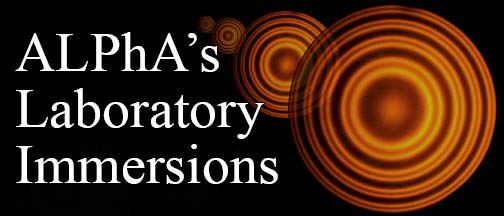- Home
- What We Do
- Laboratory Immersions
- Immersions 2021
- Imm2021StNorbert_3DPrinting
3D Printing a Laser Housing for Spectroscopy Experiments
St. Norbert College, July 14-16, 2021
This Immersion will explore a technique to use commonly available 3D printers in the development of lasers suitable for atomic experiments. Lasers useful for undergraduate applications require adjustable optical feedback for frequency control. This process is accomplished by using a diffraction grating to send back into the laser diode light at a particular frequency, controllable by the angle of the grating. This light then seeds the stimulated emission process, controlling the laser wavelength. Here we will explore 3D printing a laser housing that contains the crucial elements of a diffraction grating, piezoelectric transducer, and fine adjustment. When combined with a commercially available diode mount, this design allows full control of laser frequency. This technique not only allows experience with 3D design, but makes important atomic spectroscopy experiments like saturated absorption spectroscopy more accessible for undergraduate physics departments.
During the Immersion, the first day will be dedicated to understanding design of components in CAD and the process of 3D printing components. The second day will focus on the theory and implementation of optical feedback for laser frequency control. Participants will understand and align the components involved in a laser housing. On the last day, several uses of the laser will be explored, including saturated absorption spectroscopy in rubidium and observation of laser modes in a simple grating spectrometer. Data can be taken on the tuning range and resolution of the laser system. Participants should plan to bring a laptop for CAD design, as well a laboratory notebook for use during the immersion.
The basics of the laser housing designed here can be purchased for around $600. If commercial current and temperature controllers are needed, they will cost an additional $2000. There are a variety of spectroscopy experiments that could be implemented with this laser system. The two explored here could be purchased for around $1000-$2000 each, depending on what equipment is currently available.
Photo of setup:


Erik
Brekke received his B.A. from Gustavus Adolphus College in MN, and his M.S. and
Ph.D. from the University of Wisconsin-Madison.
His research is in the field of atomic and optical physics, focusing on
the interaction of atoms with laser light. He specializes in using multi-laser
systems to generate novel laser sources through frequency conversion. In
addition to using optical feedback to control diode lasers in my research, he
has implemented these techniques in advanced laboratory and experimental optics
courses, including experiments on laser design and atomic spectroscopy. He is excited about how these 3D printed
laser housings can bring this experience to a wider range of physics students,
as these projects are great at providing hands on research experience.
Erik Brekke, Assoc. Prof. of Physics, St. Norbert College, 100 Grant Street, GMS 2096, De Pere, WI 54115-2099. Email: erik.brekke@snc.edu. Telephone: 920-403-3189
Please note that the Jonathan F. Reichert Foundation has established a grant program to help purchase apparatus used in Laboratory Immersions. Limitations and exclusions apply, but generally speaking the Foundation may support up to 40% of the cost of the required equipment.





